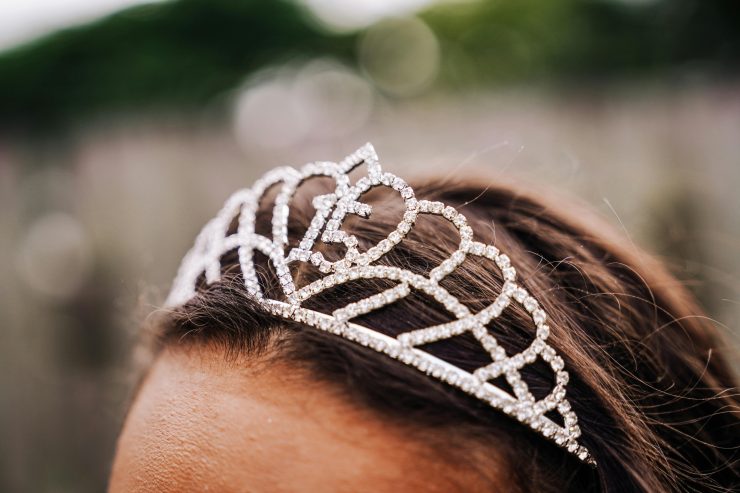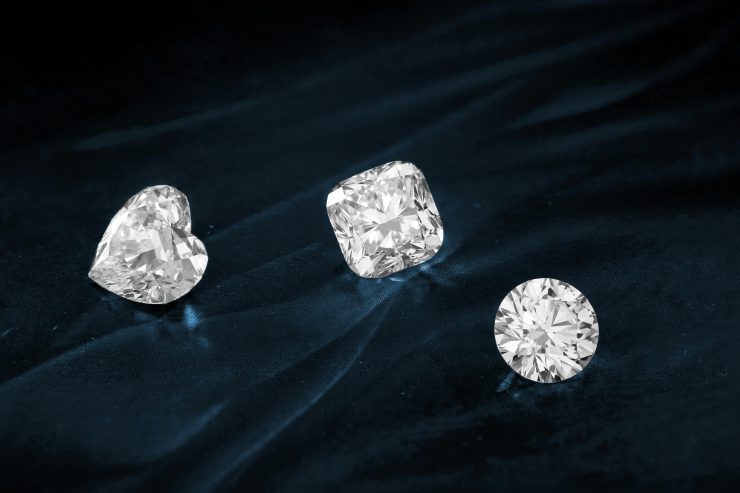Introduction: The Power of a Well-Crafted Description
In the increasingly competitive diamond market, particularly within the lab-grown sector, the importance of compelling product descriptions cannot be overstated. Unlike traditional natural diamonds, lab-grown diamonds still face perception challenges among certain buyers, making it essential for retailers and sellers to highlight their distinct advantages clearly and effectively. A well-crafted description does more than list specifications—it tells a story, builds trust, and bridges the gap between scientific innovation and emotional appeal. Informed buyers are more likely to appreciate the value of a lab-grown diamond when key features such as origin, quality, and sustainability are clearly articulated. For sellers and marketers, understanding which features to emphasize—and how to do so in a way that is accurate, informative, and engaging—can make the difference between a simple listing and a persuasive, conversion-driving sales tool.

Emphasizing Origin and Production Process
One of the defining features of lab-grown diamonds is their method of creation, and this aspect should be prominently featured in any product description. Lab-grown diamonds are developed using either the High Pressure High Temperature (HPHT) method or the Chemical Vapor Deposition (CVD) method. Highlighting these technologies not only provides transparency but also conveys the sophistication and precision of modern gemology. HPHT mimics the natural conditions under which diamonds form deep within the Earth, while CVD builds the diamond atom by atom using carbon-rich gas in a controlled environment. Customers who are science-minded or environmentally conscious may find these processes particularly appealing. Moreover, describing lab-grown diamonds as “laboratory-created” or “man-made from pure carbon” rather than “synthetic” helps maintain a positive connotation, steering the language toward innovation and away from artificiality. Including origin information also builds credibility and aligns with consumer demands for traceability and ethical sourcing.
Detailing the 4Cs with Precision
While the traditional Four Cs—cut, color, clarity, and carat weight—are also used to grade lab-grown diamonds, their role in descriptions is even more crucial given that consumers may not be as familiar with how these standards apply to man-made stones. Providing detailed information about each of the 4Cs gives buyers confidence in the product’s value and quality. For example, a well-executed cut, whether round brilliant or cushion, can enhance a diamond’s brilliance, making it appear larger and more sparkly. The color grade should be explained in the context of the GIA or IGI scale, clarifying what a D or E color means visually. Clarity descriptors like VS1 or SI2 should be supported with explanations of what types of inclusions are visible to the naked eye versus under magnification. Carat weight should be paired with millimeter dimensions to give a more accurate sense of size. Including certification details from respected institutions like the GIA, IGI, or GCAL reinforces these attributes with authoritative backing, adding to the description’s overall credibility.
Showcasing Ethical and Environmental Benefits
One of the strongest differentiators of lab-grown diamonds is their ethical and environmental footprint, and this is a powerful point to emphasize when writing descriptions. Unlike mined diamonds, lab-grown alternatives do not involve the environmental degradation or complex geopolitical issues often associated with traditional diamond mining. Product descriptions should confidently mention that lab-grown diamonds are “conflict-free,” require no deforestation, and have significantly lower carbon emissions and water usage, especially when produced using renewable energy sources. However, to maintain objectivity and credibility, it’s essential to avoid overgeneralization. Where possible, include verifiable claims, such as the use of solar power or third-party sustainability certifications. Consumers increasingly align their purchases with their values, particularly in the luxury sector. By transparently explaining the sustainable practices involved in production, sellers can appeal to eco-conscious customers without resorting to greenwashing or exaggerated statements. This reinforces the idea that choosing a lab-grown diamond is both a beautiful and a responsible decision.
Incorporating Visual and Sensory Language
While lab-grown diamonds are technically identical to mined diamonds, the sensory experience they evoke can still be differentiated through vivid, engaging language. Descriptions should go beyond specifications and include visual and emotive details that help the customer imagine the product in a personal context. For example, rather than merely stating that a diamond is “brilliant cut,” a more evocative phrase might be: “The expertly executed brilliant cut unleashes a cascade of light, creating a dazzling play of fire and sparkle with every movement.” Describing a color grade D diamond as “icy white with a crisp luminosity that stands out in any setting” adds a human touch to a technical attribute. This kind of language helps bridge the gap between data and desire. It is also helpful to mention how the diamond performs in different lighting conditions—whether it retains brilliance under soft candlelight or glows under natural daylight. These descriptive flourishes create an emotional link with the consumer and elevate the product from a commodity to a cherished item.

Addressing Price and Value Comparisons Objectively
An essential part of any effective lab-grown diamond description involves the transparent yet tactful presentation of pricing and value. Lab-grown diamonds typically cost between 30% to 50% less than their mined counterparts, depending on size and quality. Instead of simply stating that the price is lower, a more strategic approach is to explain why this price advantage exists—reduced mining costs, scalable technology, and streamlined supply chains contribute to this pricing efficiency. Importantly, descriptions should avoid implying that lab-grown diamonds are “cheap” or inferior. Instead, phrases like “exceptional value,” “accessible luxury,” or “affordable brilliance” frame the pricing in a positive light. Drawing comparisons to natural diamonds in terms of chemical and physical properties (i.e., being identical in hardness, refractive index, and brilliance) also reinforces the idea that customers are not compromising quality for cost. By emphasizing the economic advantages in a respectful and factual way, the description appeals to budget-conscious buyers without diminishing the diamond’s desirability.
Highlighting Design Versatility and Setting Compatibility
Another key feature to include in a compelling product description is the design flexibility of lab-grown diamonds. Because they are available in a wide range of shapes, sizes, and colors, lab-grown diamonds lend themselves well to bespoke or contemporary jewelry designs. Descriptions can note that these stones are ideal for engagement rings, earrings, and custom pieces, offering both creative freedom and aesthetic consistency. Since lab-grown diamonds are physically identical to mined ones, they can be set in any traditional setting, including prong, bezel, halo, or tension styles, without requiring any modification. Sellers can highlight how lab-grown diamonds pair beautifully with a variety of metals—from classic yellow gold to modern platinum or recycled white gold—appealing to customers interested in both timeless and trend-forward aesthetics. Mentioning how well lab-grown diamonds complement current design trends, such as minimalist solitaire settings or vintage-inspired motifs, can make them even more appealing to style-conscious buyers.
Explaining Certification and Grading Standards Clearly
A crucial factor that builds trust in any diamond purchase is independent certification. Lab-grown diamonds, like natural ones, are graded by reputable gemological labs such as the Gemological Institute of America (GIA), International Gemological Institute (IGI), and GCAL (Gem Certification & Assurance Lab). Descriptions should explicitly mention that each diamond includes a certificate verifying the 4Cs, along with specific data like polish, symmetry, fluorescence, and laser inscription (if applicable). Clearly communicating this adds reassurance that the diamond’s attributes have been professionally verified. It’s also beneficial to distinguish between full grading reports and brief appraisal summaries, so buyers understand what they’re receiving. Transparency about certification reinforces credibility and helps buyers make informed decisions. For online retailers, offering access to the certificate PDF or high-resolution scans directly on the product page can further increase buyer confidence. A short explanation of what each grading category means adds an educational element that may reduce uncertainty among first-time buyers.
Including Customer-Oriented Information and FAQs
Finally, the most successful product descriptions often anticipate and address customer questions directly. This includes practical concerns like care instructions, warranty information, return policies, and shipping timelines. For instance, stating that a diamond is “accompanied by a lifetime warranty against manufacturing defects” or “eligible for a 30-day risk-free return” can alleviate purchase hesitations. Including educational content in the form of FAQ sections—such as “How do lab-grown diamonds differ from cubic zirconia?” or “Will my diamond retain its value over time?”—provides immediate answers while framing the seller as knowledgeable and supportive. Additionally, including testimonials, usage scenarios, or “ideal for” statements (e.g., “ideal for environmentally-conscious engagements” or “perfect for milestone anniversaries”) can further guide the consumer journey. Thoughtfully incorporating these customer-facing elements turns a static product description into a helpful, value-driven buying experience that speaks directly to shopper needs.